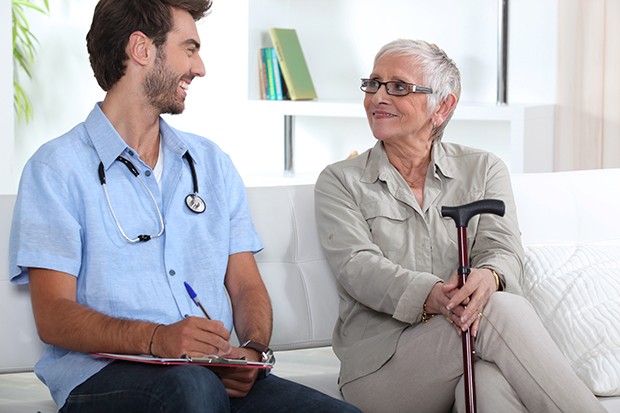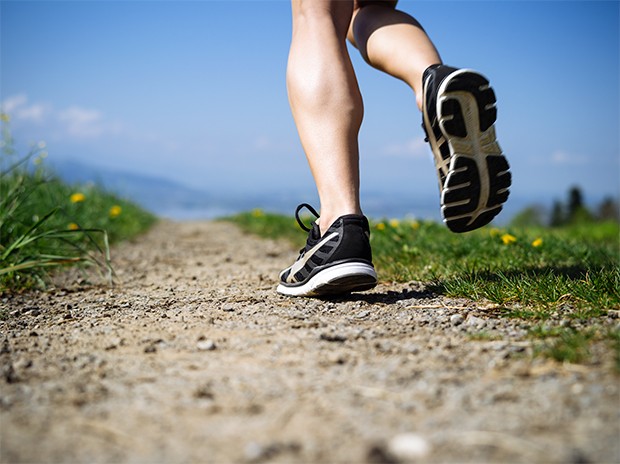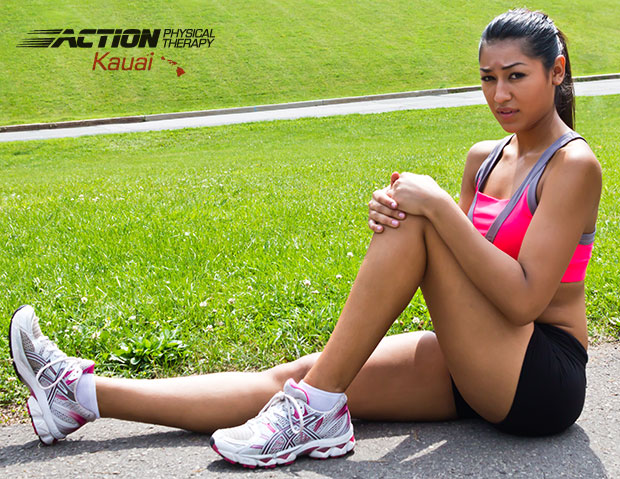Kauai Physical Therapy Blog
Home of Action Physical Therapy: Kauai's Premier Physical Therapy and Personal Fitness Clinic
News
Stand at Your Desk! Then Sit Down Everywhere Else?
Evidence on Standing Desk Benefits Doesn’t Sit Well With Researchers

Apparently, it’s hard to come by solid research confirming that the new trend in desks actually decreases time spent sitting.
A newly released Cochrane review of studies on the effects of interventions aimed at reducing sitting time for office workers asserts that most evidence to date is of “low to very low quality.” Or, “just cuz you stand at work doesn’t mean your sitting less overall.”
Authors also found low-quality evidence about effects of the sit-stand desks on musculoskeletal symptoms, workplace performance, reduction in sick days, or increase in any form of moderate-to-vigorous intensity physical activities.
Read more at the APTA web site: http://www.apta.org/PTinMotion/News/2015/1/28/StandingDeskResearch/
(APTA members can access the full text via the Cochrane Database of Systematic Reviews in PTNow ArticleSearch. Nonmembers can access the abstract only for free via PubMed.)
Most MS Patients Who Received Stem Cell Transplants Still in Remission Years Later

Hope for MS sufferers.
A phase 2 study of 24 volunteers has demonstrated impressive results by rebuilding the immune system using a patient’s own stem cells. Researchers found that more than 86 percent of the patients remained relapse free after three years, and nearly 91 percent showed no sign of disease progression.
Most of the multiple sclerosis (MS) patients who took part in the cutting-edge stem cell study HALT-MS are still in remission years later. The phase 2 study has demonstrated impressive results by rebuilding the immune system using a patient’s own stem cells.
Studying the volunteers who underwent stem cell transplants between 2006 and 2010, Dr. Richard A. Nash of the Colorado Blood Cancer Institute in Denver and his colleagues recently published their findings about the cutting-edge stem cell study HALT-MS.
Building a New Immune System, from the Ground Up
The goal was to reboot the patients’ immune systems. The researchers gauged success based on how long the patients remained relapse-free.
Patients were given high-dose immunosuppressive therapy, or HDIT, to erase their native immune system. Then, researchers reintroduced blood-forming stem cells that had been harvested from the patients’ own blood.
The treatment lasts about 21 days and the patients had to stay in close contact after their release. The chemo used to suppress their immune system has disadvantages, but researchers are encouraged by the success. Things are looking up for MS sufferers!
Running Shoe Myths
Gimmicks aside, we can help our patients run faster and prevent injury, there’s just not a magical cure-all shoe to help do it. We would recommend plyometrics drills like box jumps, and spending more time in the weight room to become a stronger and more injury-free runner.
Myth #1: Running Shoes Prevent Injury
Myth #2: You Need to Shop for Your Foot Type
Myth #3: Energy Return Makes You Faster

Myth #1: Running Shoes Prevent Injury
Never has any research been able to indicate that a shoe can prevent injury. Shoe companies will throw their tech jargon at you about their shoes “aiding this” or “preventing that.” Sorry, simply not true.
Myth #2: You Need to Shop for Your Foot Type
You have been marketed at to believe overpronators need motion control, people with high arches need more cushion, and neutral runners should be in a more neutral shoe. Again, just marketing from people selling you their shoes. Actually the whole arch support idea has been disproven.
Myth #3: Energy Return Makes You Faster
I think the original article has it stated best, “No shoe, unless it has an engine in it, will ever return energy to the runner.” No material in this world at this time returns any energy back to your stride.
Read more at: http://www.medbridgeeducation.com/h/clinical-pearl-jay-dicharry-top-3-myths-in-running-shoes-fb
10 Ways to Increase Insulin Sensitivity for Better Fat Loss

If you impair your body’s ability to efficiently store glucose, and you’ll be fighting an uphill battle against fat loss. You see, insulin sensitivity and glucose metabolism are directly correlated to your body composition. So with that being said, here are 10 ways you can increase insulin sensitivity and make it easier to change your body composition for the better. Here’s to a better, fitter you in 2015.
- Eat Low-Glycemic Carbohydrates
- Make Exercise Part of Your Lifestyle
- Drink Green Tea
- Eat Your Omega 3 Fatty Acids
- Increase Your Fiber Intake
- Avoid Trans Fat
- Cinnamon (Yup, cinnamon)
- Limit Fructose Consumption
- Avoid Fast Food (duh!)
- Get Your Vitamin E
To read the specifics and details of each suggestion click here to visit coachcalorie.com.
Bionic Eyes & the Top 10 Medical Breakthroughs of 2014
 Here are 10 breakthroughs set to reshape healthcare in the coming year. The Cleveland Clinic asked 100 of its top experts — people who focus on patient care very day — to offer insight these are their answers, the top 10 innovations for 2014:
Here are 10 breakthroughs set to reshape healthcare in the coming year. The Cleveland Clinic asked 100 of its top experts — people who focus on patient care very day — to offer insight these are their answers, the top 10 innovations for 2014:
10. Targeted therapy for cancer
9. Heart risk through the gut
8. Personal sedation station
7. Hope for acute heart failure
6. Fecal transplant restores balance
5. Decision support for smarter surgery
4. Breakthrough for hepatitis C
3. Device disrupts seizures
2. Genomic tests for managing cancer
1. The bionic eye becomes reality
Some of these items are more interesting than others. You may not care about fecal transplants, but who doesn’t want a bionic eye? Click here to read more.
Acetaminophen does NOT effect recovery time in Low Back Pain
Or should that be a question: Acetaminophen does NOT effect recovery time in Low Back Pain?
 Despite being recommended by more than 15 different Clinical Practice Guidelines (CPGs) for Low Back Pain (LBP) Since 1987, it seems as if maybe Tylenol doesn’t help recovery time.
Despite being recommended by more than 15 different Clinical Practice Guidelines (CPGs) for Low Back Pain (LBP) Since 1987, it seems as if maybe Tylenol doesn’t help recovery time.
A large and compelling recent study titled “Efficacy of paracetamol for acute low-back pain: a double blind, randomized controlled trial” recently evaluated the role of paracetamol (acetaminophen) in managing acute LBP.
It found there were NO statistically significant differences between the placebo group or either of the acetaminophen groups for recovery time, adherence to tablet usage, and adverse events.
Kauai Marathon Starting Line Video
It is so nice to see so many runners show up and participate in this year’s Kauai Marathon.
Here is a fun video of the start of the race. Hopefully you will be as inspired as we were to get up and get moving!
For Meniscus Tear, Exercise Therapy Outperforms Surgery
For Patients With Meniscus Tear, Exercise Therapy Outperforms Surgery in Key Muscle Strength Measure
 In a study that turned the tables on common research that uses exercise therapy evaluate the effectiveness of arthroscopic surgery, used a surgery group as a control to measure improvements in quadriceps strength and neuromuscular function. They write that such improvements, “can provide functional improvements, pain relief, and possibly also a delay in the onset of osteoarthritis (OA)” in individuals with the tears.
In a study that turned the tables on common research that uses exercise therapy evaluate the effectiveness of arthroscopic surgery, used a surgery group as a control to measure improvements in quadriceps strength and neuromuscular function. They write that such improvements, “can provide functional improvements, pain relief, and possibly also a delay in the onset of osteoarthritis (OA)” in individuals with the tears.
Exercise therapy can improve certain functions to a degree not possible through arthroscopic surgery for middle-aged patients with degenerative meniscus tears, according to a new study from Denmark. Researchers believe the improvement in function through exercise—more than 16% greater than improvement experienced by the surgery group—may lead to better long-term outcomes.
To read more on this subject, click here.
Walking 6,000 steps a day might protect adults at risk of knee osteoarthritis
 Walking 6,000 steps or more each day might protect adults at risk of knee osteoarthritis from developing mobility issues, such as difficulty getting up from a chair and climbing stairs, according to a new study.
Walking 6,000 steps or more each day might protect adults at risk of knee osteoarthritis from developing mobility issues, such as difficulty getting up from a chair and climbing stairs, according to a new study.
Even though walking is a common daily activity for older adults, research has found two-thirds of adults with arthritis walk less than 90 minutes per week.
“Walking is an inexpensive activity and despite the common popular goal of walking 10,000 steps per day, our study finds only 6,000 steps are necessary to realize benefits,” White said in the release. “We encourage those with or at risk of knee OA to walk at least 3,000 or more steps each day and ultimately progress to 6,000 steps daily to minimize the risk of developing difficulty with mobility.”
To read more and see the study click here.
 “The success and popularity of the Tyler Twist led us to develop and evaluate an exercise for golfer’s elbow,” lead research author Timothy Tyler, PT, MS, ATC, said in the release. “The Tyler Twist, a novel exercise using the TheraBand FlexBar, was shown to significantly improve strength and reduce pain for individuals with chronic tennis elbow. This new golfer’s elbow exercise, dubbed the Reverse Tyler Twist, also employs a FlexBar and was found to be effective at reducing the pain for patients suffering from golfer’s elbow.”
“The success and popularity of the Tyler Twist led us to develop and evaluate an exercise for golfer’s elbow,” lead research author Timothy Tyler, PT, MS, ATC, said in the release. “The Tyler Twist, a novel exercise using the TheraBand FlexBar, was shown to significantly improve strength and reduce pain for individuals with chronic tennis elbow. This new golfer’s elbow exercise, dubbed the Reverse Tyler Twist, also employs a FlexBar and was found to be effective at reducing the pain for patients suffering from golfer’s elbow.”

